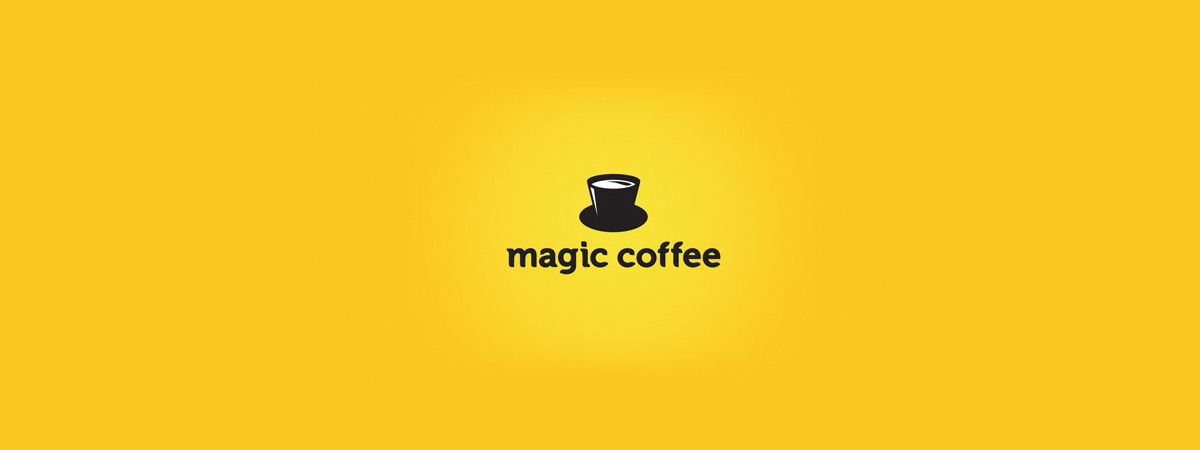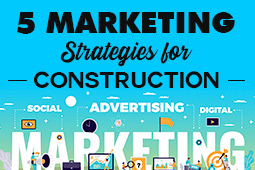There’s good logos, and then there’s great logos. What separates the two? All effective logos follow the same basic graphic design guidelines, but the great ones have that little something extra: creativity. For most people, a creative logo design can make the difference between getting remembered and getting forgotten a few seconds after being seen.
But what makes a logo creative? How can you design a creative logo if you don’t have much creativity yourself? We explain everything you need to know below, starting with examples of 8 innovative logo designs so you know what works when designing your own!
Drop Media

Source
The idea behind creative logos is that their unique twist makes them more memorable. Take the logo for Drop Media for example. The name itself isn’t very creative, and if their logo was a simple wordmark (just the name without anything fancy), chances are after a while you’d forget their name or even their existence.
So to make their logo creative, Drop Media throws in some fun visuals to make it more interesting. A segment of the O in drop is “dropping,” with the motion line from the fall making up the letter I in media.
On the surface, this is a cute optical effect that makes looking at the logo more exciting, like a visual joke. But going deeper, it’s also a great branding technique to help people remember their name — the “drop” is the most memorable part, improving name recognition for Drop Media.
Talking Dog Entertainment

Source
Talking Dog Entertainment uses another classic visual technique for their creative logo design. They make excellent use of the empty space between the dog’s head and tail to create a comic book word balloon. When using this technique, it helps to strip away unnecessary details: here there’s just a single-colored silhouette.
What’s especially brilliant about this logo is that it still makes sense without the word balloon because the tag doubles as the dog’s collar. It’s that kind of cleverness that leaves a lasting impression on the viewer, which improves your logo’s memorability, which in turn improves your brand recognition.
The key to this logo is that both visuals represent the brand name: a dog for “dog” and a word balloon for “talking.” These may seem subtle, but they go a long way in helping viewers actually remember your company name.
Steps

Source
The logo for Steps shows you don’t need fancy visuals or optical illusions to make your logo creative. It’s just a simple creative logo design, but still displays the same cleverness and visual wordplay to improve memorability as the other creative logo designs.
As you can see, the letter E is designed as stairs to represent steps, and that’s all you need to turn an otherwise dull wordmark logo design into a memorable and creative logo design. Also notice how the typography has rounded edges and is sans serif — these traits make the brand seem friendlier and more accessible, which adds to the logo’s playfulness.
Magic Coffee

Source
The logo for Magic Coffee is a prime example of using reversible images, the optical illusion where the same picture can be interpreted in different ways (like the famous example “My Wife and My Mother-in-Law”). Is their logo a cup of coffee or a magical top hat?
Again, Magic Coffee uses imagery to boost associations to their brand name. The two depictions, a cup of coffee and a top hat, both relate to the words in their name, “magic” and “coffee.” The design itself is so simple and basic, but the meaning goes deep — a perfect combination for any logo.
Mister Cutts

Source
There’s a lot going on in the Mister Cutts logo, although you may not see it all at first glance. For starters, there’s the reversible image of a pair of scissors and a face, although it’s a lot less subtle and realistic than the Magic Coffee logo. Still, it’s clever enough to be remembered, and cute enough to be enjoyable — plus the stylized mustache also adds to the barber shop associations.
The visual itself is pretty simple, using only one color without much detailing, aside from the little dot at the center of the scissors (i.e., the “nose”). Too much visual noise would distract from a reversible image, so it’s a smart choice to keep it basic where they can.
Additionally, there’s some creative typography with the two Ts in Cutts. This is meant to symbolize cutting hairs, with one hair shorter than the other. If the audience misses that tiny nuance, though, that’s fine — even without the meaning, the double Ts stand out and help people recognize the logo when they see it again.
Bridge

Source
Like the logo for Steps, the Bridge logo opts for simplicity over grandiose visuals. They similarly choose to turn a letter in their brand name into a visual pun, and again linking the imagery to their name — in this case a literal bridge from R to D.
Just like with Steps, this is all you need. There’s nothing convoluted or distracting about their logo, just a simple name with a quirky effect to help people remember. Because there’s no elaborate visuals, they display their brand personality through font and color, both leaning towards a more formal and professional side while maintaining a slight playfulness.
Antisocial Network

Source
Creative logos design is often funny, as Antisocial Network shows. They take a somewhat generic logo shape — the elongated bar with rounded edges — and subvert it to turn it into a racy joke with the middle finger.
This would be an effective technique for any brand that wants to come across as edgy, but works doubly well here. Because the company’s name is “Antisocial,” the middle finger analogy is more than just a joke, it also boosts name recognition and brand awareness.
It’s also worth noting that the “anti” in “antisocial” is a little more bold than the rest of the letters. This subtly adds emphasis to the most negative part of the word, making the brand come across as even edgier.
Handy Dog

Source
The creative logo for Handy Dog is a great example of a visual pun. By using a shadow puppet of a dog — which everyone knows comes from your hand — they can visually represent both aspects of their name, improving recognition and memorability while leaving a lasting impression.
The choice of colors and shapes works well to highlight their logo creativity, mimicking the white spotlight used for shadow puppets and the black of shadows. More subtle, they combine the words of their name without a space, but bold one and not the other to set them apart and enhance readability.
3 Expert Tips for Designing a Creative Logo
What can you take away from the creative logo designs above? Here’s 3 practical tips if you want to make a creative logo yourself.
Visual Puns
One of the most direct ways to make a logo creative is to add a visual pun, meaning to give your imagery a surprise twist that makes the viewer think twice. For example, the falling piece in Drop Media is a visual pun because it’s “dropping” — this is the visual equivalent of using witty wordplay in speech.
Visual puns work great for any logo because they enhance memorability. Our brains have to work a little extra harder to “get the joke,” and that effort helps us remember the logo later if we see it online or in a store.
On top of that, because they’re humorous, they also make your logo more enjoyable. This is a smart tactic for brands that want to come across as funny, casual, or friendly, like breaking the ice with a cute gag.
Dual-Purpose Typography
Typography is an ideal instrument for making a creative logo. Most brands benefit from including their name in their logo as a way to encourage brand awareness and introduce the company to new people. But having a name alone in your logo is too timid for casual brands, so how do you spice it up? Adding creative imagery, like dual-purpose typography.
Dual-purpose typography is when you turn the letters in your logo into visuals, like the E in the Steps logo or the R in the Bridge logo. These letters serve dual purposes, both as normal letters to spell out a word, and as visual elements to depict a scene.
While any dual-purpose typography can add to your logo, it’s best to choose imagery that relates to your brand name or industry. The E in the Steps logo shows stairs, relating to “steps,” and the R in the Bridge logo shows a bridge, a direct representation of the brand name.
If your brand name has a strong visual connotation like these but you don’t want to build your whole logo around it, dual-purpose typography is the perfect middle-ground.
Reversible Figures (Two Images in One)
Reversible figures (explained in the Magic Coffee entry) are a common and effective way to make a creative logo, but they’re not always easy to create. It’s not just that you have to design two images, but those two images have to fit together perfectly. That’s no easy feat, even for a professional graphic designer.
If you’re designing your logo yourself and you’re new to graphic design, you can still accomplish reversible figures as long as you keep it simple. Try starting with a silhouette or outline image to minimize the details — it’s easier to make basic, two-dimensional shapes into reversible images than more realistic three-dimensional shapes.
How to Design a Creative Logo Yourself
Now that you have an idea of what goes into a creative logo, the question is, how do you make one? Essentially you have two options: hire someone to design it for you or design it yourself. Both have their own merits and drawbacks, so let’s examine both individually.
Hiring a Designer
Professional designers know by heart all the tips, tricks, and techniques we’ve mentioned above, and then some. When you hire a designer, freelance or from an agency, you’re buying their expertise just as much as their time.
The problem is, no skilled designer works for free. The most glaring downside of hiring a designer is the cost — talented designers charge hundreds or even thousands of dollars for logo design.
Sometimes you can find cheaper alternatives on sites like Fiverr, but those sites have a poor record for delivering what they promised, and there’s tons of ex-Fiverr users who felt they were ripped off. The industry standard for a logo design is around $200, so if someone charges $5, you’re right to be suspicious.
Moreover, even if you have the money to spare, it can be difficult to find the right designer for you. Graphic design is a creative field, so there are innumerable artistic styles to choose from. You have to be sure to find a designer who both understands your vision and is capable of bringing it to life, but that can take time.
Design a Logo Yourself
If you don’t have spare cash in your budget for a logo, don’t despair. While in the past you may have had limited options, nowadays technology has advanced so that virtually anyone can design their own logo using an online logo design tool like logogenie.
In our digital era, design software is less about the technical skill of your hands and more about your creative ideas. You don’t need to master your brush strokes or pencil shading — you don’t even need steady hands. With digital logo makers, all you need is an idea.
Logogenie, and other online design tools, use templates to make design fast and easy, even for first timers. First, you select your industry from the dropdown menu.
We’ve categorized our templates by the needs and demands of the top industries, so finding yours is the first step. Our algorithm will then generate the top choices for your industry.
Simply choose the one you like and start editing. You can customize each template however you want, personalizing your choices for:
Main images
Company name and slogan
Font and typography
Color schemes
Text and picture sizes
Text and picture placement
Adding new icons
Layering (putting some images behind or in front of others)
You can choose from our internal library of over 200 icons. A quick glance shows that there are plenty of the intellectual imagery we mentioned above, including trees with rainbow leaves, shield crests, books, graduation caps, and more.
If you want to use more advanced techniques, we wrote a quick beginner’s guide to using Logogenie. This explains all the nuances of the Logogenie interface, including how to edit individual aspects of the base image, change certain colors but not other, and perfecting your typography.
Using a DIY logo maker like logogenie, you can create a professional-tier logo in just minutes. When you’re done, you can buy all permissions and commercial licensing for $24.90, which grants you your logo forever.
While the template-style of design works well for first-timers, you’ll get better results if you bone up on some graphic design basics beforehand. Keep reading our blog for special design tips, straight from expert designers.
Here's a great exemple of a creative logo design with logogenie's online design tools!

In this logo composition, the user has joint the leaf shaped icon to the first letter "Q" in his logo. The leaf looks like it's growing on the side of the letter, giving it a unique effect. This is a very creative approche to composing logos as the icon has been used in a creative way. We highly advise that you try this with your logo composition.
This logo is also very well structured, the texts are nice aligned. The baseline isn't too small (some people tend to make the baseline too small making it hard to read).
The fonts used in the logo blend in very well with the style of the icon. The style of the font has an "organic" feel to it.






